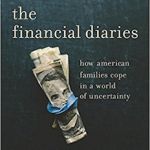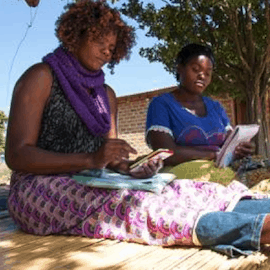Dear Diary: New Financial Diaries Research Explains Why Many Americans are So Angry
Would you rather have more money or a more stable financial life? A striking 92 percent of Americans in a recent survey chose stability – a sign of the deep undercurrent of financial insecurity running through the world’s richest country.
A new book by Rachel Schneider of the Center for Financial Services Innovation, and Jonathan Morduch of New York University explores that insecurity in remarkable detail. Called “The Financial Diaries, How American Families Cope in a World of Uncertainty,” the book presents insights gained from tracking the financial lives of 235 low- and moderate-income households for a full year. I recently interviewed Schneider about the research and its findings.
“The financial crisis is shining a spotlight on the idea that people are suffering, but we don’t know enough about how or why, or what that looks like,” she says. “We wanted to do research that would have a long shelf life, if you will, in terms of creating some deeper understanding about what financial insecurity looks like … what it means for people day to day.”
Part of what they discovered was that millions of Americans are facing what the book calls “a shocking level” of income and expense volatility – much like what’s experienced in emerging markets, where the financial diaries research method was first popularized. According to Schneider, this insecurity is a key driver of much of the anger and alienation experienced by many Americans, and the social and political upheaval it has sparked.
“The idea of the American dream is core to how we see ourselves in this country: This idea that you can, with a little bit of hard work and some luck, and slow and steady savings, over time, achieve mobility,” she says. “Yet what we saw in our research was that people’s lives actually follow a far different pattern than that. Rather than feeling that they’re in a slow and steady upward climb over time, what we saw was that people often feel really anxious and financially insecure, because near-term financial challenges are so much a part of their lives and mental state that it’s very difficult to think and focus on the long-term.”
Schneider says this anxiety is easy for people outside of low-income communities to overlook. “If you look at national numbers, our economy’s doing great. Unemployment’s low, productivity’s growing … so I think plenty in the political establishment didn’t realize the kind of economic anger that many people were nonetheless feeling. … But when you do a deep dive like we did in the Diaries, where you deeply understand the financial lives of a few families and really try and unpack what’s happening to them day-to-day, you see a far more insecure picture than national unemployment rates show you. … Many people work full time, but nonetheless don’t have steady incomes. And I think that’s what feels unfair, that’s what drives anger – I’m putting in the hours, but I’m not getting in return a real sense of stability and the ability to achieve the kind of life I want to achieve.”
What is driving this income volatility, and what can government and financial services providers do to help address it or mitigate its effects? We discuss these and other questions with Schneider in NextBillion’s latest podcast. You can catch the interview (above) and/or subscribe on Soundcloud or iTunes, and refer to a list of the questions she answers below.
- Describe the problem that motivated this research – how do you define financial insecurity, and how serious and widespread is it in the U.S.? (Answer starts at 1:27)
- What impact does financial insecurity have on our ‘social fabric’, for lack of a better term. How did it play into the recent election, for example? (Answer starts at 3:36)
- Talk about the “financial diaries” approach – what makes this type of research noteworthy? (Answer starts at 6:38)
- Describe a typical household in this research group – what were their main challenges and methods of coping? (Answer starts at 9:30).
- How are these challenges/coping mechanisms similar or different to low-income people in developing countries? (Answer starts at 13:53)
- With the strong role that informal finance plays in the lives of many low-income people, how can formal financial services providers design products that better tap into these needs? (Answer starts at 16:25)
- Income and expense volatility is a big focus of the study – talk about why this is so significant a challenge, and why it has grown over the years. (Answer starts at 19:30)
- What could be driving this income volatility – does it have anything to do with the emergence of the “gig economy” as an alternative to stable, full-time employment? (Answer starts at 22:42)
- Talking about the “dark side” of technology-driven productivity gains by companies, which often come at the expense of workers: Is there a role for government in helping to address this issue, and the financial instability it helps cause? (Answer starts at 26:32)
- I’m sure at CFSI, you’ve worked with many innovative financial services providers who are addressing these issues – could you highlight a couple that seem particularly exciting? (Answer starts at 29:15)
- Was there anything that surprised you as you got into studying this, or any common misconceptions about low-income people that the general public should re-assess based on your findings? (Answer starts at 32:10)
James Militzer is NextBillion’s senior editor.
Photo: Street art by graffiti artist Banksy, in Boston. Credit: Chris Devers, via Flickr.
- Categories
- Uncategorized



